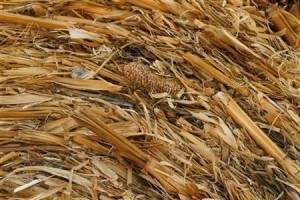Microbes in the human gut can digest fiber in order to ferment them into nutrients that nourish human cells.
The latest research by scientists is that microbes in the human gut can digest fiber, breaking it down into simple sugars in order to ferment them into nutrients that nourish human cells.
Scientists have scoured cow rumens and termite guts for microbes that can efficiently break down plant cell walls for the production of next-generation biofuels, but some of the best microbes actually may reside in the human lower intestine.
These findings have significance for human health and also for biofuels production, since the same sugars can be fed to yeast to generate ethanol and other liquid fuels.
The human microbes appear to be endowed with enzymes that break down a complex plant fiber component more efficiently than the most efficient microbes found in the cow rumen. In looking for biofuels microbes in the cow rumen, researchers found that Prevotella bryantii, a bacterium that is known to efficiently break down (the plant fiber) hemicellulose, gears up production of one gene more than others when it is digesting plant matter. When searching a database for similar genes in other organisms, the researchers found them in microbes from the human gut.
The team focused on two of these human microbes, Bacteroides intestinalis and Bacteroides ovatus, which belong to the same bacterial phylum as Prevotella from the cow.
They found that the human ones actually were more active (in breaking down hemicellulose) than the enzymes from the cow.
When the researchers looked more closely at the structure of the human enzymes, they saw something unusual, many single polypeptide (protein) chains actually contained two enzymes, one of which was embedded in the other.
Further analysis of the most important protein revealed that the embedded component was a carbohydrate-binding module (CBM), which, as its name implies, latches onto carbohydrates such as hemicellulose.
This enzyme shreds the plant fiber hemicellulose so that other enzymes can work on it to break it down into its unit sugars. The study points to human microbes as a potentially potent source of microbes that can aid in biofuels production.
For more information please visit: www.igb.illinois.edu

